Each of the development process parts is equally important for the success of the final product. To come up with a demanded solution, you need to get started with market research, proceed with technical requirements, come up with the design solution, think about the UX and UI, and finally, hire a technical team to help you with the practical implementation of your app or website.
There are quite a lot of issues to cover and discuss, but let’s dwell on the importance of creating an outstanding user experience (which is impossible to create without the same outstanding user interface and design) and find value-promising ways to deal with this 50%-creative and 50%-technical task.
UI and UX Specifics – The Look From Within

UX (USER EXPERIENCE) is the complex impression of interacting with a service or product. It deals with the way the website looks and loads, the way the support service works, and the time customers wait for their orders. The whole team works on UX, while a UX designer takes some purely technical specifics that directly influence the way your users interact with your website or app.
UI (USER INTERFACE) is the part of UX that deals with human interaction with the interface. The UI designer is responsible for button usability, the right location of headers, the ease of finding a personal account or any other necessary section on the website, and the like. The UI designer’s area of responsibility is not as wide as that of the UX designer.
However, UX and UI still can not be separated. Working on the design of buttons and forms, a good UI designer thinks about the user experience as a whole, while the UX designer delves into the details of the interface.
Why UI/UX Is the Most Important Part of Any App Development
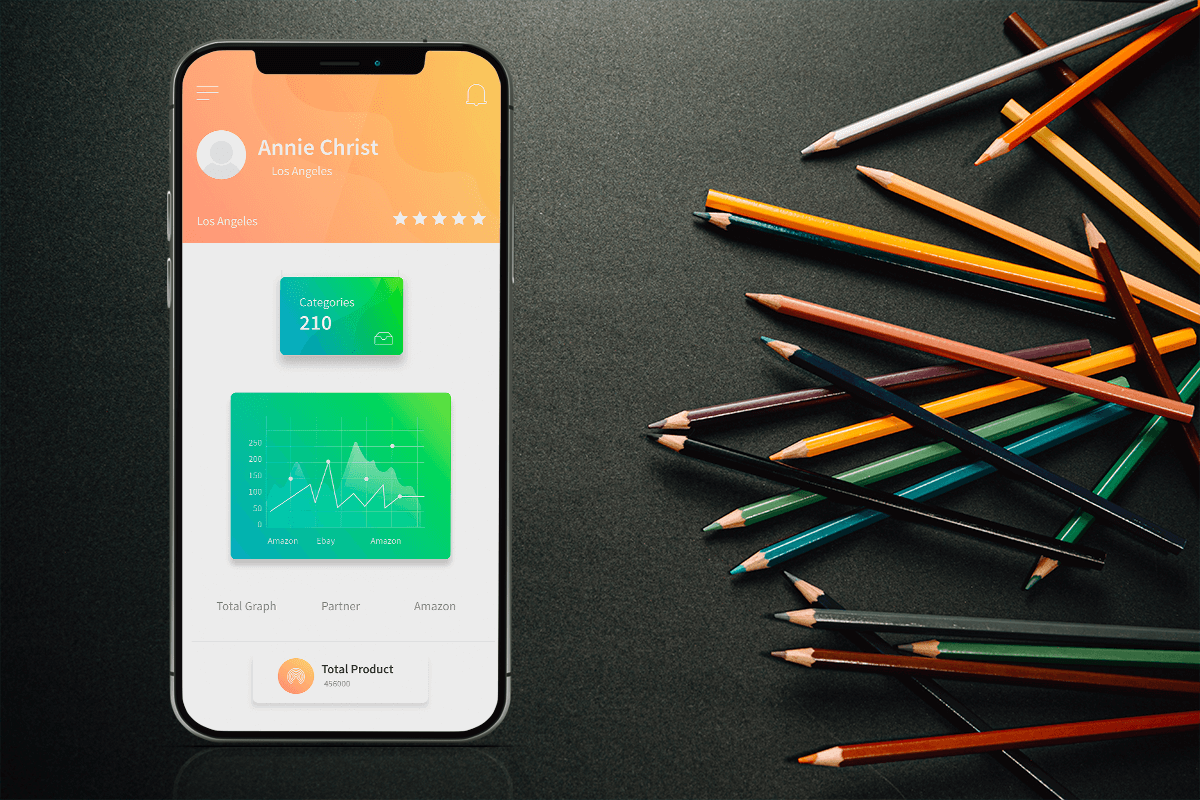
The interface is the mediator between the product and the person. A perfect interface has no hindrances or limitations. Everything is fast, simple, and user-friendly. Coming up with such an interface may be quite challenging, and that’s why you should be quite wise when hiring a team that will help you with this task.
Simply put, a good user interface is important because it can turn potential visitors into customers since it facilitates the interaction between the user and your site or application.
Obviously, the user interface is a fairly complex part of any site or product. It required users’ preferences to be researched, analyzed, and taken into account when working on your UI solution.
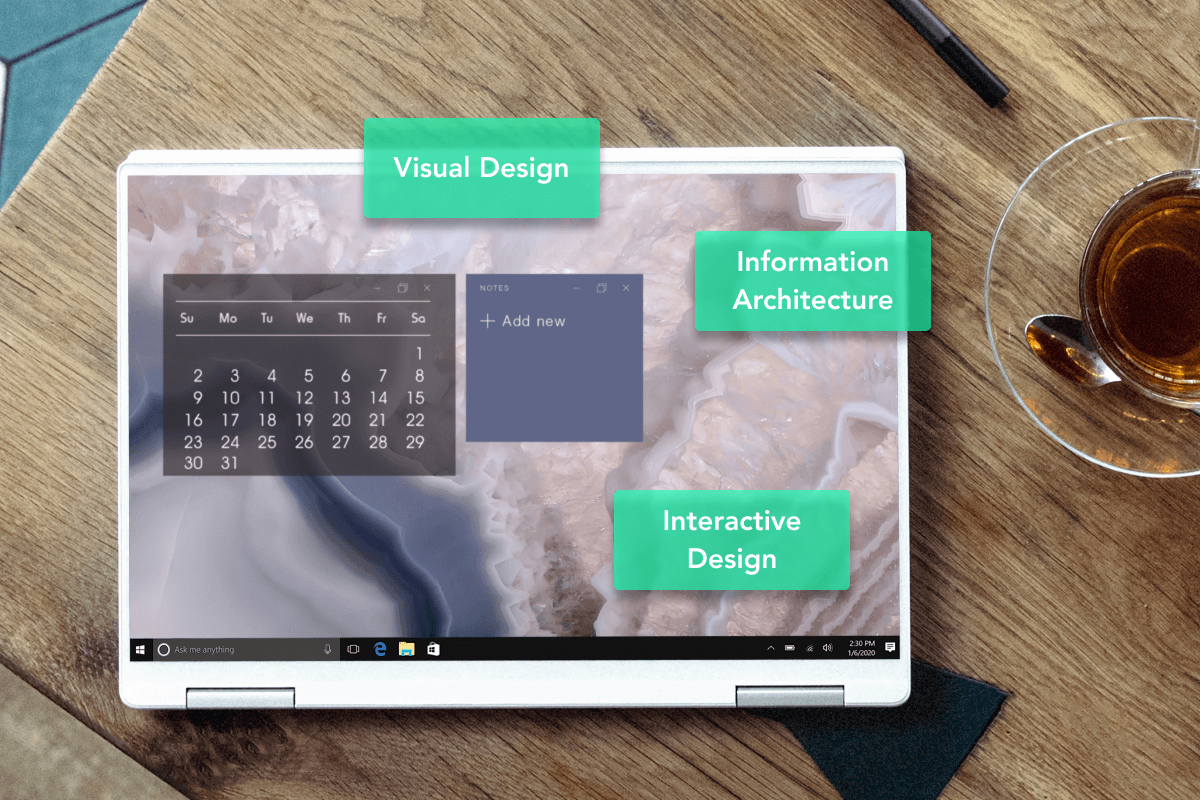
What’s more, the user interface not only focuses on aesthetics but also maximizes the responsiveness, efficiency, and accessibility of the site. In other words, a well-designed user interface will help improve the conversion rate on your site by perfectly balancing the best practices from your niche with specific expectations your users may have. Good user interface design is an optimal combination of visual design, interactive design, and information architecture:
Visual Design
Visual design enhances a site’s appearance by strategically implementing such elements as fonts, colors, and images. When done professionally, visual design makes a page look elegant without sacrificing its function or content.
Interactive Design
Interactive design shapes user interactions with the website or app. Excellent interactive design solves their problems in a timely manner. It’s also a point where you can come up with new ways for users to interact with the system and respond to it.
Information Architecture
The information architecture is designed to help users find the information they need to perform various tasks. Consequently, it involves labeling, structuring, and organizing Web content so that it is easily accessible. What’s more, thinking through information architecture, you need to take SEO requirements into account as well since the visibility of your website in the organic search results is essential for attracting new target customers.
Three Possible Ways to Approach Your UI/UX Development

When it comes to the full-cycle product development or creation of one of the essential milestones, most companies choose from the three paths available to them. Let’s consider the potential benefits and pitfalls of each of them.
- Hire an in-house team locally. Sometimes hiring local teams really makes sense, for example, when the cost of the local workforce is lower than the cost of offshore designers and developers. However, it is rather an exception than a rule. In most cases, hiring an in-house team means you need to solve all organizational issues, rent premises, look for suitable specialists, interview and test them, plus always control their work. This way promises a lot of time and money to be spent;
- Hire freelancers. Some startup companies also decide to hire freelancers since they are quite used to working remotely, plus there is a great talent pool to choose from. Freelancers are also more affordable options compared to in-house teams. However, this way of creating your UI and UX will require you to establish clear communication practices, and you will also have to control each task remotely;
- Outsource your UI/UX development. Outsourcing the development of your UI and UX means hiring a professional team that is already created, has well-established communication and workflows, and is managed competently. This is also a remote opportunity. However, the benefits you get pay off the inability to meet your design and development team members in person.
Product UI/UX Outsourcing – Main Benefits

Thus, outsourcing the creation of your user interface and experience turns out to be the most beneficial option since it provides you with the essential advantages.
1) It allows You to Save Money
Maintaining in-house UX/UX designers forces you to pay taxes and deductions. Design outsourcing does not require such expenses as salary, deductions for insurance, pensions, well, and money for the rental of space. According to the experience of our customers, outsourcing the tasks of UI/UX design creation allows them to save up to 60% of their budgets compared to hiring these specialists locally.
2) It Allows You to Save Time
Dealing with your UI/UX design remotely allows you to solve the problem as quickly as possible. All that is required is to make a timely call and give instructions to the manager. What’s more, when you partner with a reliable outsourcing vendor, you may rely on well-established communication practices that allow the customer and the team to stay in touch following the schedule convenient for both of them.
3) It Provides Guarantees and Allows for Delegation
The creation of your user interface and experience on outsourcing terms will always be regulated by the contract that specifies all the conditions and gives you legal guarantees. What’s more, you may avoid a lot of additional problems associated with workflow management and task distribution since you will be able to take advantage of well-established practices.
4) It Ensures Flexibility
Outsourced design teams can be easily expanded if there is a need to cope with some additional tasks. This is one of the main benefits of outsourcing as such – you are staying flexible with your remote team. Thus, if you want to proceed to the next stage of your project creation, you may easily strengthen the creative team with technical specialists. After they cope with their task of work, your development vendor is likely to help you with the product launch, its promotion, and marketing strategies development while still saving a lot of your time and money.
UI/UX Outsourcing. Rates in the USA, Western and Eastern Europe
What makes the outsourcing model so beneficial? The matter is the fact that the same work performed of the same quality performed by specialists from different countries may have quite a diverse price range since the cost of services is evaluated differently in different parts of the world.
For example, the UI/UX designer’s rate in the USA can reach $200 per hour, while the same quality of work from a specialist from Ukraine will cost $30 to $40 per hour.
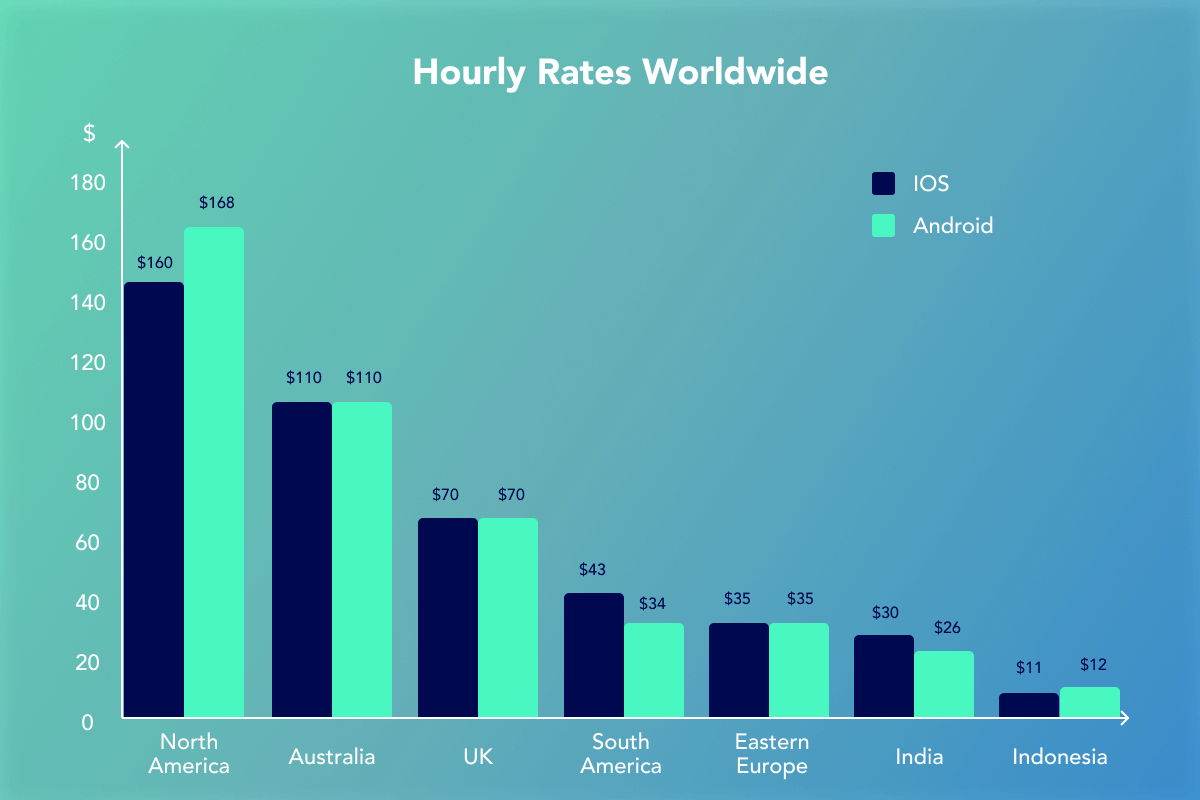
The price of mobile app design services is based on the number of hours spent by a specialist. The more complex the app, the more time it will take to design it, and the higher the development budget will be. You can see approximate values in the chart below:
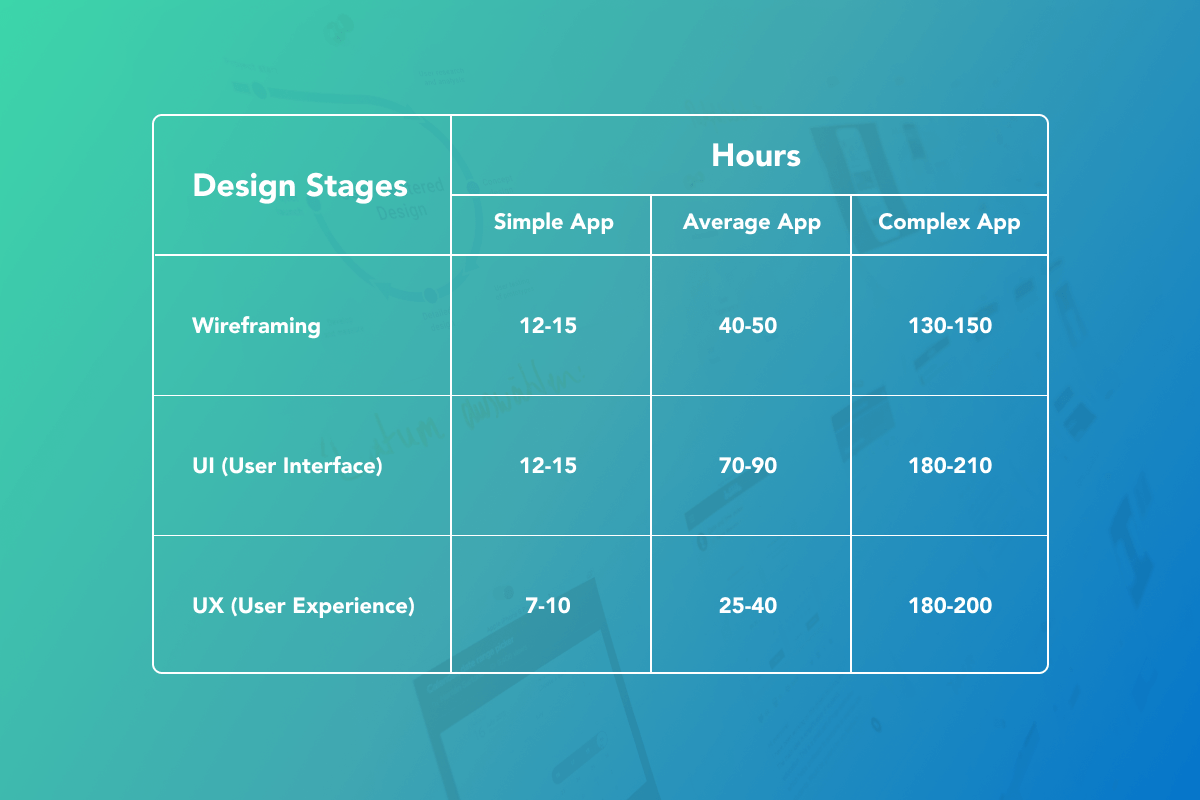
These figures can be multiplied by the average hourly rate of specialists from different regions:
- $10 to $20 per hour — India, Pakistan, Bangladesh
- $25 to $45 per hour — Eastern Europe
- $40 to $60 per hour — Western Europe
- $65 to $130 per hour — United Kingdom
- $150 to $200 per hour — United States.
Therefore, mobile app design services may cost $1,500 to $30,000, depending on design complexity and the developer’s hourly rate. Also, you should always allocate some budget for UX research and user acceptance testing. However, let’s dwell on practice-proven tips for successful UX/UX outsourcing in the following section.
UI/UX Outsourcing – Do’s & Don’ts
Outsourcing the creation of your UI and UX doesn’t mean allowing the work to follow its course. You should (and you will be able to) participate in each stage of your project creation, so make sure to consider the Do’s and Don’ts practices below.
Do’s
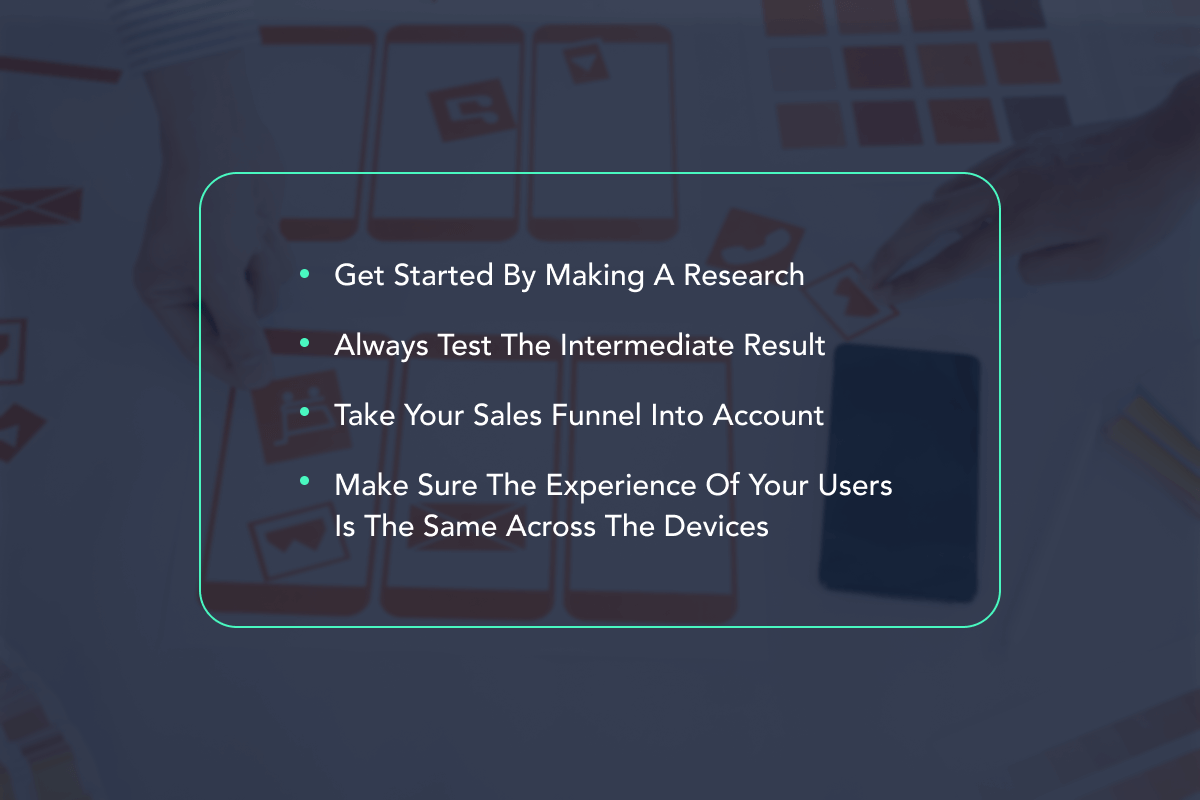
- Get started by doing a research
If you are creating your product according to the LEAN methodology, you already know that researching is essential at each stage. Thus, the first thing to get started with when creating your UI and UX is to make one more research taking into account the specifics of your target audience, the design and development trends in your niche, the design solutions that are already implemented by your competitors, and of course, you shouldn’t forget about your own vision.
- Always test the intermediate result
Testing each of your design ideas is one more LEAN principle you should follow. What’s more, testing your design is neither difficult nor costly. For example, you may use the heat mapping technique and find out which elements of the design and UI catch the user’s attention and use these insights in the further development process.
- Take your sales funnel into account
In the perfect picture of the world, you should have a sales-boosting design that will be realized with the help of an intuitive user interface that also takes the sales funnel into account. Thus, when creating your UI, put on the shoes of your users and think about each step of their journey. This approach will allow you to locate all the necessary elements in the right places, and thus, your website or app will have better chances of generating leads and turning them into your customers.
- Make sure the experience of your users is the same across the devices
This is quite an intuitive and obvious tip. However, some companies still miss this point when working on the UI and UX of their apps. Meanwhile, an average user has at least three different devices that he/she uses to manage one account, and that’s why optimizing your UI and UX across them is essential. By providing the uniform and holistic experience of interacting with your website or app using different gadgets, you will allow your customers to stay in touch with you and buy your goods or services anytime they need them.
Don’ts
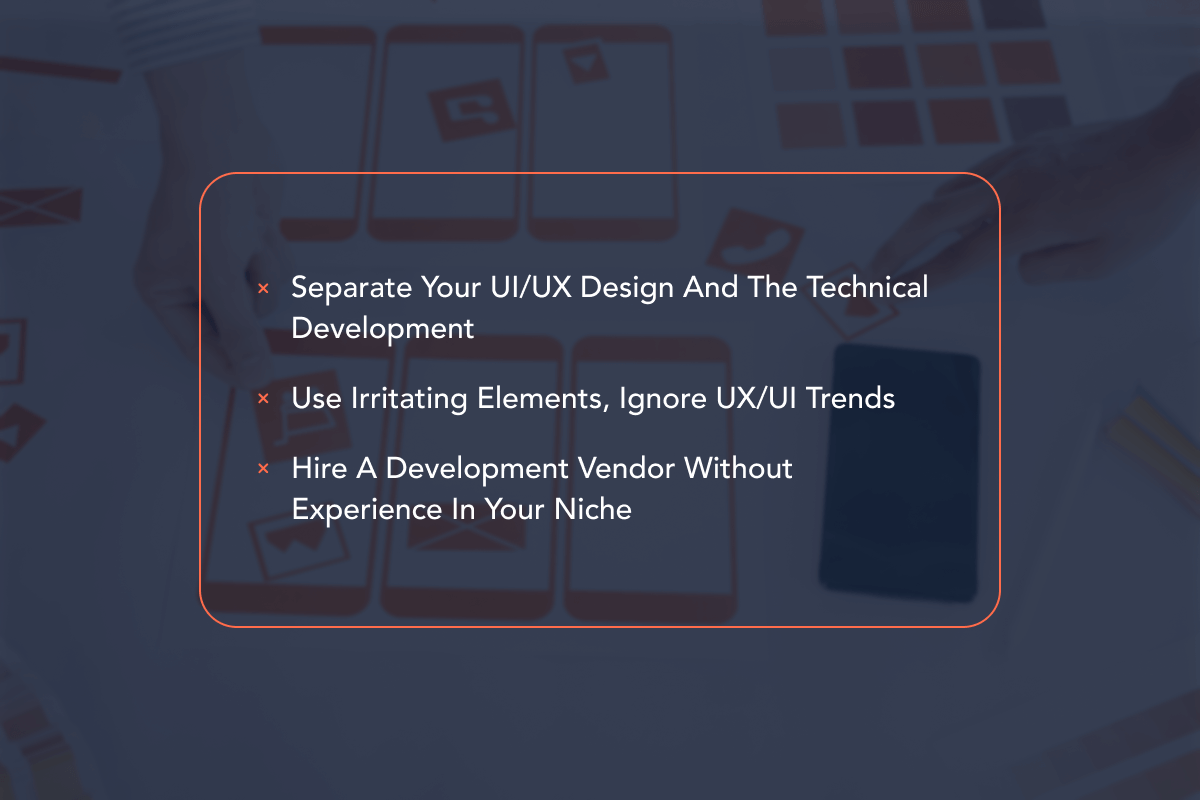
- Separate your UI/UX design and the technical development
One of the best things about UI/UX outsourcing is the ability to combine technical and creative specialists in one powerful team. Actually, creating your dealing without the technical support from the developers is not entirely wise since the best products are created only when the entire team has a holistic vision and common goals, may share their ideas, and improve your product until it meets your desires and the ones of your users.
- Use irritating elements (even for the sake of marketing)
Unexpected pop-ups, auto-playing videos, sudden sounds, and links opened in a new tab are the worst things you may offer your users. In 2021, your solution should be free from these elements. Even if you consider some of them essential to strengthen your marketing message, find a way to share it in a more predictable way and within the channel your customers would like to use.
- Ignore UX/UI trends
Actually, UX and UI trends may be quite tricky. But ignoring them would also be a mistake. Instead, you should find the trends that are relevant to your niche and that will work well for your users at the same time. To put it simply, you shouldn’t follow the trend in UI design just because your competitors do it. Instead, you need to research the users’ expectations one more time and find out the innovative design ideas that will appeal to them and allow you to look more beneficial against the competitors’ backgrounds.
- Hire a development vendor without experience in your niche
When looking for a software development company to help you with UI and UX creation, make sure the company you are going to hire understands the specifics of your business and has already implemented some solutions from your niche. This will allow you to save some money on business analysis, plus your designers and developers will be able to reuse the knowledge they already have. Thus, you will be able to save some costs without risking the final product quality.
P.S. We also kindly advise not to hire a development vendor with a huge mentality difference. In a nutshell, mentality matters and you will be able to personally confirm it in the stage of the mentality models research. Perfectly, your developers and designers should think in the same way your future customers think. It will allow for achieving an ideal product-user match.
Conclusion
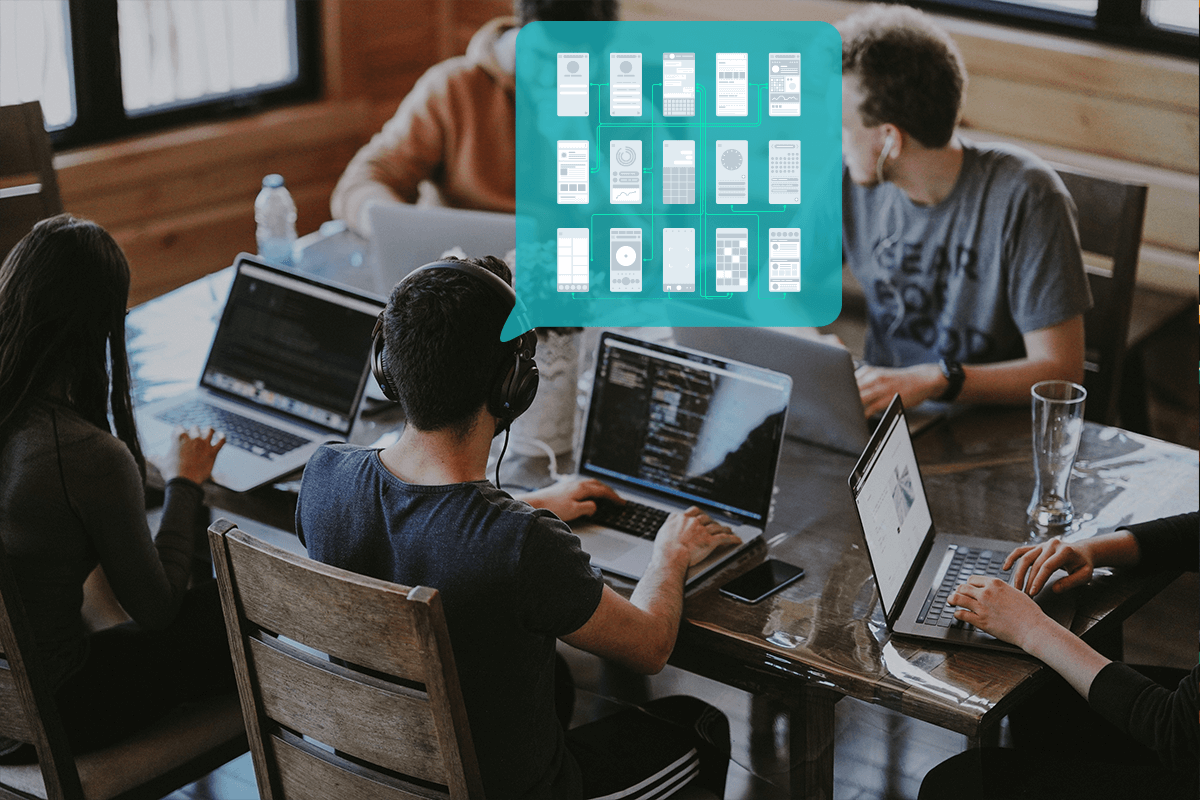
Thus, outsourcing the creation of your user interface and experience is a worth-taking step that has a good chance of increasing the final value of your product. However, you should always be wise with your development vendor choice since following the right approach at each of the development stages is 90% success of your future solution.
At Softengi, we are quite sure that the user interface and the overall experience your customers will get are at the core of a high-quality and demanded product. That’s why we approach its creation in a strategic manner while carefully balancing between your business needs, dominating trends in your niche, and the expectations of your users. Feel free to get in touch with, and we will gladly share more insights into your UI/UX development!





